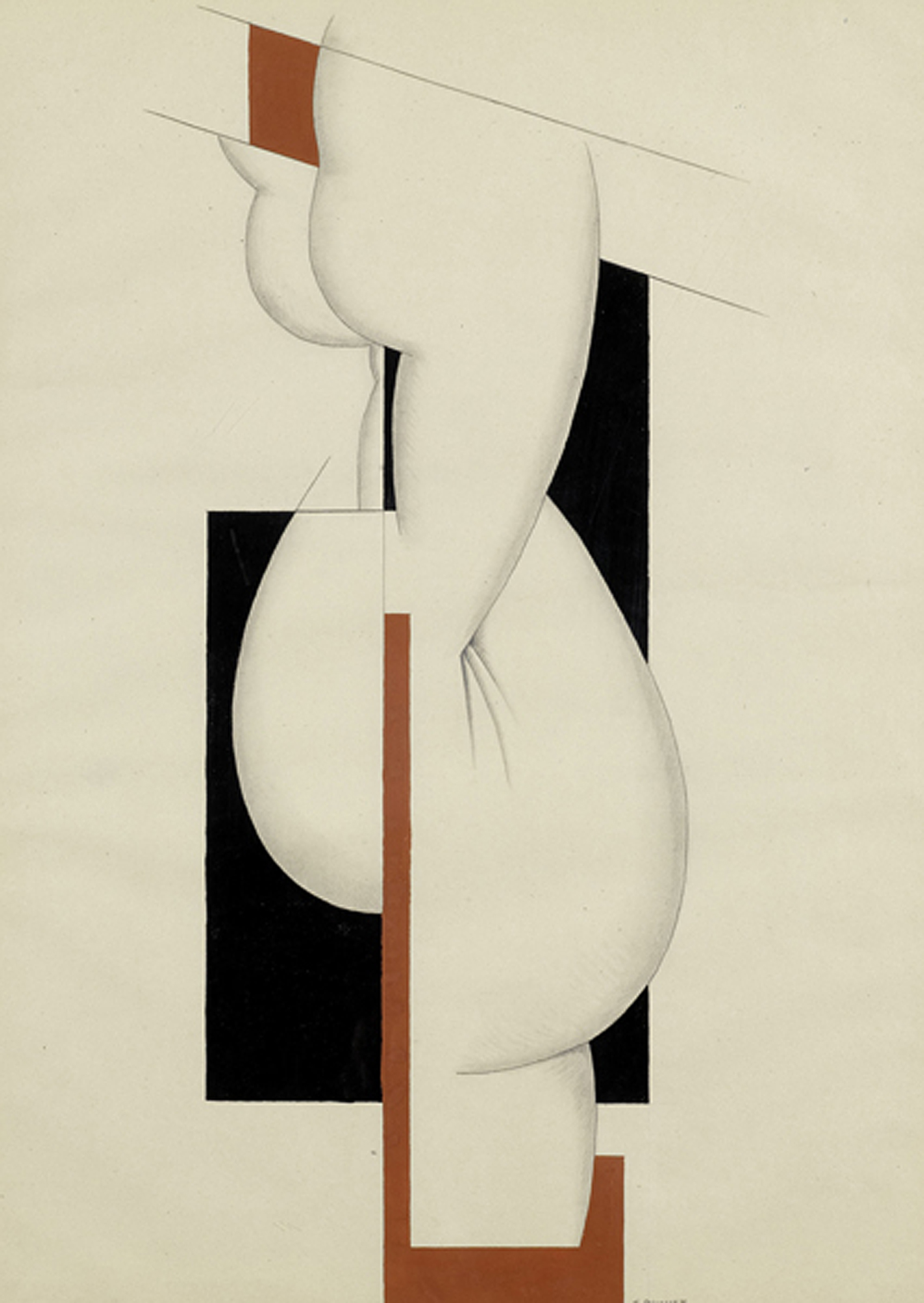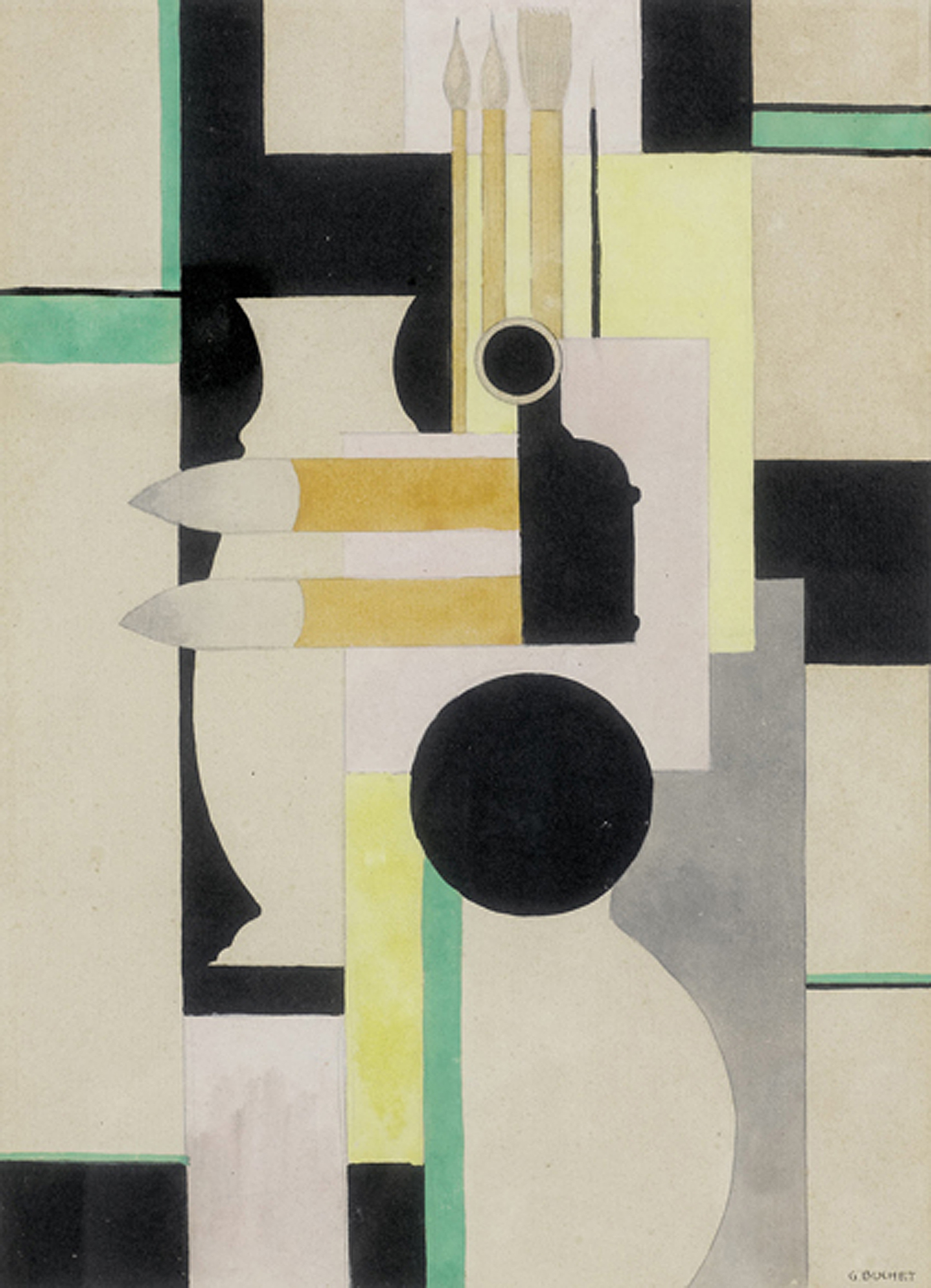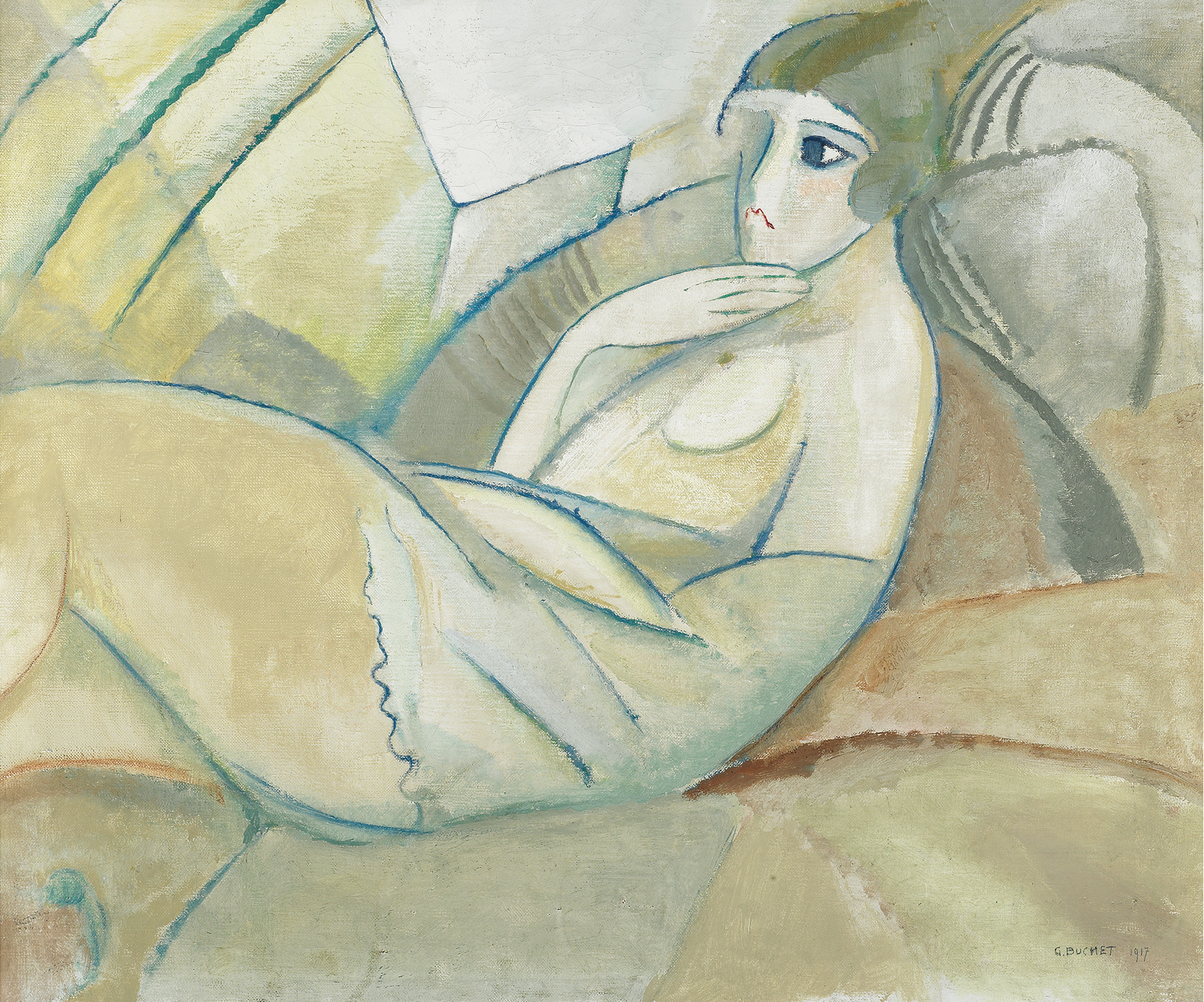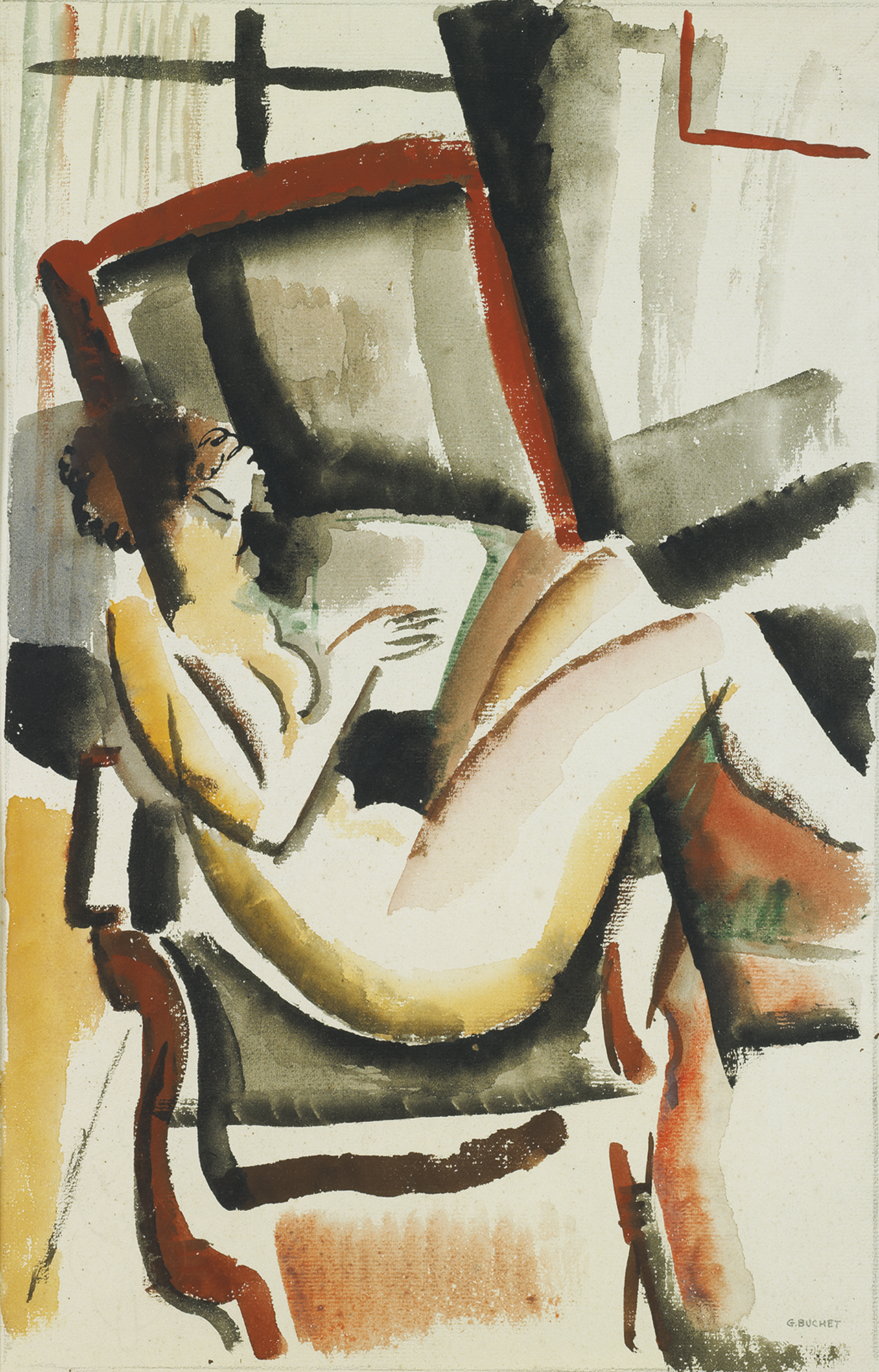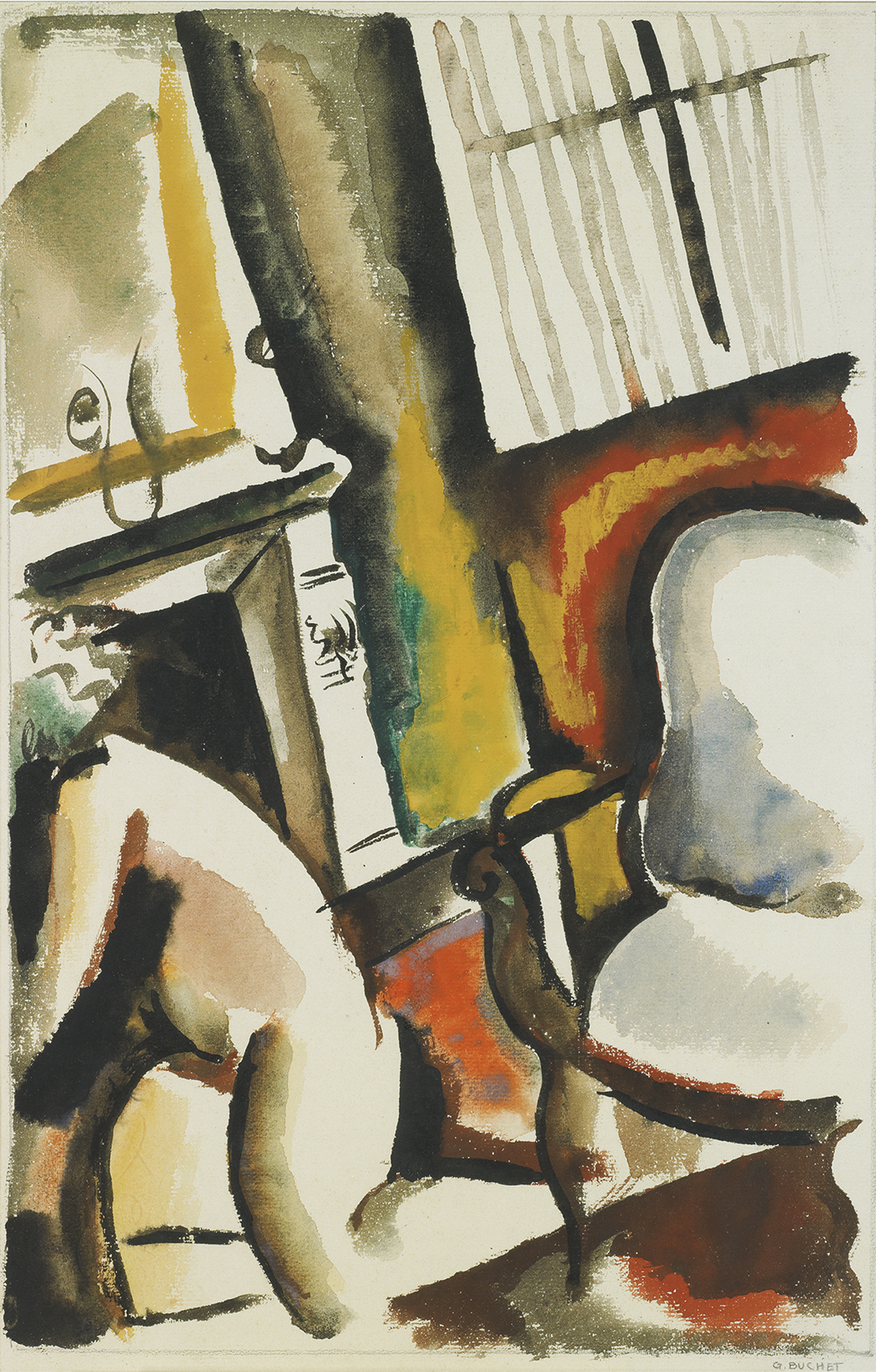Gustave Buchet belongs to a generation of Swiss artists who, like Alice Bailly, are drawn to the Parisian avant-garde movements and interested in Cubism in the early years of the 20th century. Born in 1888 in Étoy, Buchet founds Le Falot group in Geneva in 1915 with several other artists, notably Maurice Barraud and Rodolphe-Théophile Bosshard. These artists are looking to resist the influence of Hodler’s style, which is deemed outmoded, and wish to take up an innovative art like the kind being done in France.
Buchet studies at Geneva’s School of Fine Arts and participates in Dada events mounted by Christian Schad in the same city. In 1920 Buchet settles in Paris, where he exhibits as part of the Section d’or, alongside Alexander Archipenko. Fascinated by the representation of movement, Buchet adopts the Futurist aesthetic before shifting towards a flat painting that verges on abstraction. In this way he adheres to the purism developed by Le Corbusier and Amédée Ozenfant: “My painting is becoming flat, rigorously geometrical and stripped of all picturesque qualities: the painting is an object by itself.”
His return to Geneva in 1939 is marked by a major solo show at the Musée Rath. The canvases of his final years take on greater colour and are further and further removed from his avant-garde practices. He employs once again a more classic and figurative vocabulary, which he combines with all his earlier stylistic experiments. “In 1951 I judge that my laboratory work, my research, is complete and that I can begin to truly paint… My sources are diverse and infinite: I find escape as much in a landscape as in a nude or a simple flower… I use all means with an eye to expression and emotion and even Cubist disintegration… For me, the time has come for synthesis in painting.”
Buchet’s works are hanging in numerous Swiss museums, including the Aargauer Kunsthaus, Geneva’s Musée d'art et d'histoire, Zurich’s Kunsthaus and Winterthur’s Kunstmuseum.
Buchet studies at Geneva’s School of Fine Arts and participates in Dada events mounted by Christian Schad in the same city. In 1920 Buchet settles in Paris, where he exhibits as part of the Section d’or, alongside Alexander Archipenko. Fascinated by the representation of movement, Buchet adopts the Futurist aesthetic before shifting towards a flat painting that verges on abstraction. In this way he adheres to the purism developed by Le Corbusier and Amédée Ozenfant: “My painting is becoming flat, rigorously geometrical and stripped of all picturesque qualities: the painting is an object by itself.”
His return to Geneva in 1939 is marked by a major solo show at the Musée Rath. The canvases of his final years take on greater colour and are further and further removed from his avant-garde practices. He employs once again a more classic and figurative vocabulary, which he combines with all his earlier stylistic experiments. “In 1951 I judge that my laboratory work, my research, is complete and that I can begin to truly paint… My sources are diverse and infinite: I find escape as much in a landscape as in a nude or a simple flower… I use all means with an eye to expression and emotion and even Cubist disintegration… For me, the time has come for synthesis in painting.”
Buchet’s works are hanging in numerous Swiss museums, including the Aargauer Kunsthaus, Geneva’s Musée d'art et d'histoire, Zurich’s Kunsthaus and Winterthur’s Kunstmuseum.
